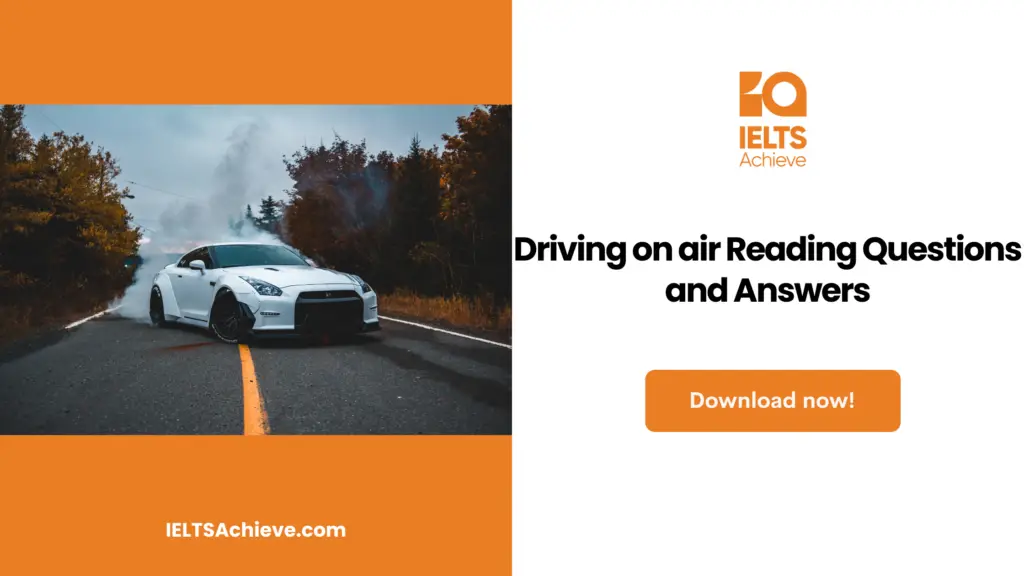The Blog post contains the following IELTS Reading Questions:
- IELTS reading sentence completion
- IELTS reading note completion
- IELTS reading diagram labelling
Stay informed and prepared for success – Explore our comprehensive Reading Test Info page to get valuable insights, exam format details, and expert tips for mastering the IELTS Reading section.
IELTS reading passage – 3D Printers

Ever wished you could find a pair of shoes to match your outfit? Fancy a pizza but don’t want to go out or wait for your delivery service to arrive? Simple. All you need is a 3D home printer. Whilst admittedly not yet mainstream technology, it is only a matter of time until the 3D printer becomes as much a part of the domestic furniture as the statutory TV or the washing machine. Currently, however, the technology remains firmly in the province of geeks and gadget lovers.
The design of the 3D home printer is nevertheless refreshingly simple. Its components are relatively few, and could theoretically be assembled by anyone with a rudimentary knowledge of mechanics and technological know-how. The 3 main elements of the printer are a metal framework which contains the mechanical part of the printer, a printer control board and a PC. The PC is connected via USB to the printer control board, which in turn is connected to the framework of the printer and attached to the side of the latter. A plastic filament of around 3mm in diameter feeds into the printer from an external source, connecting to the extruder motor inside the printer. During printing, the controlled movement of the extruder motor ensures the correct volume of plastic is used. The extruder motor in turn is connected to a heated extruder or ‘hot end’ that heats the plastic filament during printing. As the heated plastic emerges or is ‘extruded’ to use the correct terminology, it cools and is arranged in layers to create a solid 3D model.
In order to move the extruder about in 3D space, there are 3 axes, each controlled by motors. The X-axis motor, located in a midway position on the metal framework of the printer, moves the extruder left and right, using a pulley. The two Z-axis motors, which are located on either side of the heated printing bed, move the entire X-axis up and down via two threaded rods. The heated bed of the printer, which lies directly underneath the hot end of the extruder, is moved back and forth beneath the extruder by the Y-axis motor located underneath the heated bed. The bed is
heated to around 70 degrees Celsius to ensure the newly laid plastic does not warp as it cools. Overall control of the printer is effected by the printer control board and the PC which contains the programme of the model that is being printed.
Once assembled, in theory it should be possible to print a 3D version of virtually anything. However, comparatively easy as it is to assemble, would-be DIY gadget enthusiasts should be warned that the printer has major technical limitations. The finished product will always have banding and surface detail remaining as evidence of how the model was laid down. In addition, operators of the printer have to be extremely careful not to knock it whilst the machine is in the process of printing, since this will end up in model distortion. Extreme care also has to be taken in the choice of plastic filament which will ultimately create the structure of the model. Some types of plastic may warp if the temperature is not controlled properly when the melted plastic leaves the nozzle, and later, when it is cooling on the bed. Obviously the 3D model will be the same colour as the plastic filament forming it, but colour limitations can easily be overcome by painting afterwards for a multicolour finish. Another problem is that the plastic structures have to be supported as they are laid down on the heated bed or they will distort or fall away as the plastic cools.
It is virtually certain, however, that such issues will be overcome in the future. The innumerable advantages of 3D printers far outweigh any disadvantages and justify time and resources spent on such technology. Firstly, the product can be produced on the spot within a very short time frame, thereby reducing time and cost of manufacturing by traditional means. Secondly, printing objects on a 3D printer removes the need for storage space of items since whatever is required is printed as and when necessary. Finally, despite expensive set-up costs, in the long run, 3D printing works out far cheaper than normal manufacturing processes since there is no longer a need for labour costs
Unlock your full potential in the IELTS Reading section – Visit our IELTS Reading Practice Question Answer page now!
Recommended Questions:
Renewable Energy IELTS Reading Question with Answer
Questions 1-5
Label the diagram below.
Choose FIVE answers from the box and write the correct letter, A-G, next to questions 1-5.
1Z-axis motor
2hot end of extruder
3extruder motor
4plastic filament
5X-axis motor
Ready to tackle Diagram Label Completion tasks with confidence? Click here to access our comprehensive guide and learn how to accurately label parts or components of diagrams in the IELTS Reading section.
Questions 6-10
Complete the notes below using NO MORE THAN THREE WORDS from the passage for each answer.
The Pros and Cons of 3D Printers
Cons
The finished product is far from perfect, exhibiting 6 …………………. in addition to banding. In order to 7 …………………. desired, extreme care has to be taken in selecting the plastic filaments to be used. It is also necessary for plastic structures 8 …………………. during the printing process to avoid distorting the printed model.
Pros
Only every 9 ………………… is required to produce 3D models. 3D products are also much cheaper to make than using normal manufacturing processes and need no storage space. In theory 10 ………………… of 3D printers to create virtually anything from pizza to fighter planes is astounding.
Boost your performance in Summary, Notes, Table, and Flowchart Completion tasks. Click here to explore our detailed guide and learn how to effectively complete summaries, notes, tables, and flowcharts in the IELTS Reading section.
Questions 11-13
Use NO MORE THAN TWO WORDS from the passage for each answer.
Whilst 3D printing is far from becoming 11…………………, so far experiments with the new technology have been promising. Although 3D models have yet to produce anything as 12 ………………… as fighter planes, the foundation for such a technology is in place. For the moment, however, the realisation of such projects remains in the 13 ………………… future.
Enhance your sentence completion skills in the IELTS Reading section. Click here to access our comprehensive guide and learn effective strategies for filling in missing words or phrases in sentences.
Unlock your full potential in the IELTS Reading section – Visit our IELTS Reading Practice Question Answer page now!
Recommended Questions:
Renewable Energy IELTS Reading Question with Answer
Answers
1Answer: D
2Answer:
3Answer: G
4Answer: F
5Answer: B
6Answer: surface details
7Answer: create the structure
8Answer: to be supported
9Answer: short time frame
10Answer: the potential
11Answer: mainstream technology
12Answer: ambitious
13Answer: very distant

We hope you found this post useful in helping you to study for the IELTS Test. If you have any questions please let us know in the comments below or on the Facebook page.
The best way to keep up to date with posts like this is to like us on Facebook, then follow us on Instagram and Pinterest. If you need help preparing for the IELTS Test, join the IELTS Achieve Academy and see how we can assist you to achieve your desired band score. We offer an essay correction service, mock exams and online courses.

